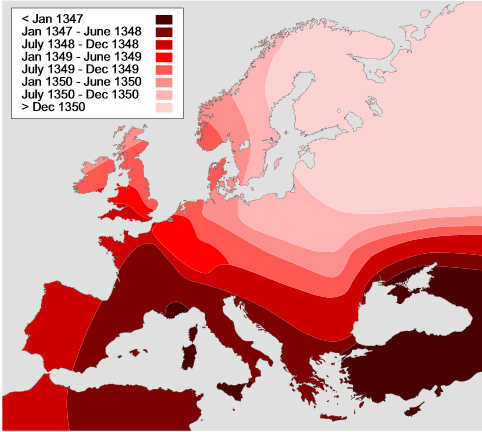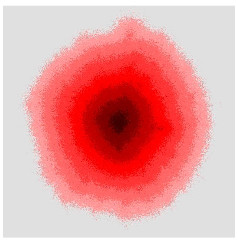| Six Degrees Of Separation Is New |
| Written by Mike James | |||
| Monday, 21 October 2013 | |||
|
There is lots of evidence that we live in a small world in the sense that any two people are connected by a small chain of people who know each other. Now there is some evidence that this situation may be relatively new. In the 14th century the world seems to have been very much larger. The small world effect is often summarized by saying that there on average just six people who know each other between any two people picked at random on the planet - the degree of separation is six. Small networks like this arise when there are lots of short connections but enough long distance connections to decrease the distance between any two nodes in the network. This all seems very reasonable but it seems that it is a very recent phenomenon. A group of researchers from the University of Michigan and the University of Aberdeen have been testing a model of the way disease spreads to find out if it has always been a small world. Many diseases are transmitted by contact and historical epidemics seem to show a pattern of spread that moves across populations as a steadily advancing wave front. The Black Death in Europe in the 14th-century is known to have spread in this way - as well defined waves of infection.
By testing a set of epidemiological models that include a parameter which sets the number of long distance contacts. it becomes clear that such wave-like propagation can only occur if the number of long distance contacts are exponentially rare.
Typical spread without long distance connections
With long distance connections other centers of infection are established, destroying the neat wavefronts.
This can also be shown to imply that the shortest chain of contacts is, on average, a long one. This means that, as the Black Death spread in waves, the society of the time was a network without the small-world effect. In other words, back in the 14th century the degree of separation was much more than seven. To quote from the paper: the small-world effect—the occurrence of logarithmically short paths between most individuals in social networks—is a modern phenomenon, dating back no more than a few hundred years. This raises many questions about how this affects our society and what impact the change is having. The paper concludes: We conclude with a question: if the global social network displays the small-world effect now but did not in the 14th century, when did things change? The occurrence of rapidly spreading pandemics in the 19th century suggests that the most substantial shift may have been the emergence around that time of relatively inexpensive means of long-range transportation, such as commercial railroads and passenger liners, but a full answer to the question will require detailed historical, geographical, and epidemiological studies before our understanding is complete. More InformationThe small-world effect is a modern phenomenon Related ArticlesVertex Coverings And The Cool Kids Problem Going Further Into Complexity With Santa Fe Institute
To be informed about new articles on I Programmer, install the I Programmer Toolbar, subscribe to the RSS feed, follow us on, Twitter, Facebook, Google+ or Linkedin, or sign up for our weekly newsletter.
Comments
or email your comment to: comments@i-programmer.info
|
|||
| Last Updated ( Monday, 21 October 2013 ) |





